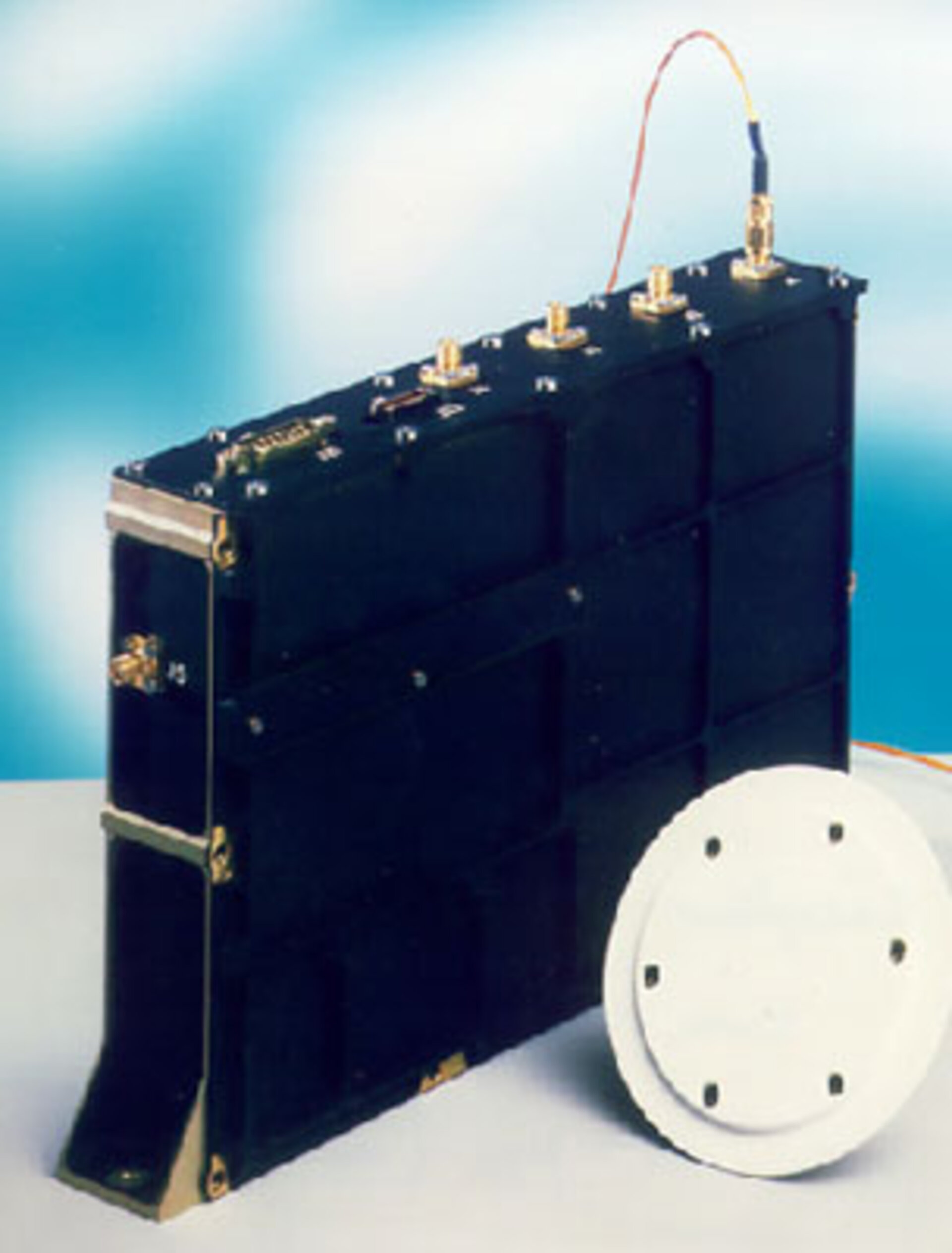Global positioning keeps satellites on track
The growing population of satellites flying above our planet can now be guided by global satellite navigation systems just as easily as by ground-based systems, thanks to the pioneering work of ESA and two leading European satellite manufacturers and operators.
ESA has helped develop two new GPS (Global Positioning System) space receivers, the TOPSTAR 3000 in conjunction with the French-based company Alcatel, and the SGR in collaboration with Surrey Satellite Technology in the UK.
Both receivers will bring more accurate, affordable satellite tracking to the commercial user. The TOPSTAR 3000 is designed for telecommunication and observation commercial missions with strong reliability requirements, and the SGR is ideal for use with the smallest type of satellites, weighing from a few hundred kilogrammes to just five.
Already, the world's ground-based communication networks - such as sea navigation, air traffic management and various forms of mobile communication - rely on the accuracy of GPS, a constellation of 24 United States satellites which transmit signals from an altitude of 20 000 km to small receivers on Earth.
Now, the precise position and orientation of low-Earth orbiting satellites travelling just 650 km above the Earth's surface can also be determined using GPS data through the new generation of space GPS receivers.
"These small satellites are travelling at speeds of 7.5 km per second, so tracking can be a difficult and tricky business," says Dr Martin Unwin, of the Surrey Space Centre, who has worked closely with ESA on the SGR project.
"Low-Earth orbiting satellites are used in a multitude of applications, from high resolution photographic monitoring of the Earth's surface to scientific and remote sensing experiments, and experimental communication systems in remote areas.”
Most big satellite users and operators rely on a network of ground stations which bounce signals back and forth to determine position and orientation, or they use tracking data that originates from the United States Space Command tracking facilities.
"The new space receivers will mean that the monitoring of satellites will become easier and cheaper for smaller operators," says Dr Unwin.
The SGR and TOPSTAR 3000 can both use multiple antennae, a feature that puts them at the forefront in a new league of GPS space receivers and allows the calculation not only of the orbital location but also of the orientation of the satellite (often referred to as the satellite's attitude).
Experimental and commercial missions have already been carried out for the receivers in both low and geostationary orbits. The TOPSTAR 3000 has been delivered to the STENTOR programme (a French space agency project for advanced research in space technology) for use in geostationary orbit as well as in several commercial observation missions in low Earth orbits from 400 to 1400 km.
The SGR has successfully used GPS data to control and correct the orbit of the UoSat 12 mission and is due to go through experimental procedures on board ESA's Proba mission due for launch in the second half of 2001.
The attitude determination capabilities of the new receivers will be of particular importance to future science and remote sensing missions, where it is important to know exact orientation to achieve accurate scientific measurements.
Satellites carrying cameras will also benefit. "For example, a discrepancy of just one degree in attitude can throw a satellite off its target on Earth by about 14 km - obviously the difference between the success and failure of any commercial satellite based system," added Dr Unwin.




